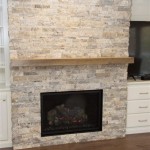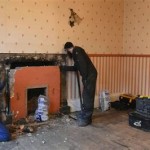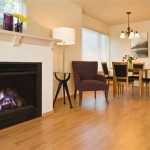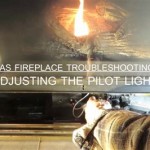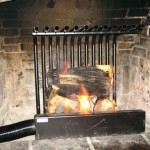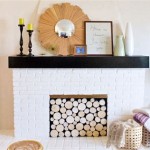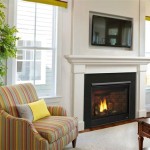Exploring the Investment: Fireplace Hearth Stone Slab Cost
The fireplace hearth, a traditionally functional and aesthetically significant element of a living space, provides a non-combustible surface extending outward from the fireplace opening. This component serves as protection against stray embers and heat, safeguarding flooring materials and surrounding furnishings. The cost of a fireplace hearth often hinges on the material chosen, with stone slabs offering a durable and visually appealing option. Understanding the various factors influencing the price of stone slabs for fireplace hearths is crucial for informed decision-making.
The purpose of this article is to dissect the cost components associated with procuring and installing stone slabs for fireplace hearths. It will detail the material selection process, examining the price variance between different stone types. Furthermore, the article will address fabrication costs, installation fees, and other ancillary expenses that contribute to the overall investment. This comprehensive overview aims to equip homeowners and contractors with the knowledge necessary to budget effectively for this important architectural feature.
Key Factors Influencing Stone Slab Hearth Cost
Several key variables contribute to the final cost of a stone slab fireplace hearth. These factors range from the inherent properties of the stone itself to the intricacies of fabrication and installation. A detailed examination of these elements is essential for accurate cost estimation.
Stone Type and Material Cost: The primary cost driver is the type of stone selected. Natural stones, such as granite, marble, slate, and limestone, each possess unique characteristics that influence their price. Granite, known for its durability and wide availability, generally falls within a mid-range price point. Marble, prized for its elegant veining and luxurious appearance, tends to be more expensive. Slate, often chosen for its rustic texture and heat resistance, can vary in price depending on the quality and origin of the stone. Limestone, a sedimentary rock, offers a more subdued aesthetic and typically aligns with a moderate price range. Fabricated stones, such as quartz or concrete blends, present alternative options with varying price points depending on the composition and manufacturing process. The rarer and more difficult to quarry a stone is, the higher its market value will be.
It is prudent to obtain quotes from multiple stone suppliers to compare pricing and assess the quality of the available inventory. Variations in color, veining, and inherent imperfections can all impact the value of a particular slab. Engaging a knowledgeable stone fabricator can help guide the selection process, ensuring that the chosen material aligns with both aesthetic preferences and budgetary constraints. Specific stone variations within each category also impact price. For example, a common granite may cost significantly less than a rarer granite with unusual coloring or patterns.
Slab Size and Thickness: The dimensions of the hearth and the desired thickness of the stone slab directly influence the material cost. Larger hearths require larger slabs, increasing the overall square footage of stone needed. Similarly, thicker slabs provide greater structural integrity and resistance to heat but necessitate a greater volume of material. Stone is sold by the square foot or linear foot depending on thickness and width. A thicker slab will generally cost more per square foot than a thinner one. Choosing a smaller hearth design can often reduce the overall material cost significantly. Carefully consider the structural requirements of the hearth to determine the appropriate thickness of the stone slab. Thicker slabs translate to increased weight that can influence transport costs and labor required for installation.
The type of fireplace and its design will dictate the required hearth dimensions. A traditional wood-burning fireplace often requires a larger hearth for safety compared to a modern gas fireplace. Before selecting a stone slab, it is important to have precise measurements to minimize waste and accurately estimate material costs.
Fabrication and Edge Detailing: The process of transforming a raw stone slab into a finished hearth involves cutting, shaping, and polishing the material. These fabrication services contribute significantly to the overall cost. Simple, straight cuts are less expensive than intricate designs or custom shapes. Edge detailing, such as bullnose, ogee, or beveled edges, adds visual appeal but also increases the fabrication cost. The complexity of the edge detail directly correlates with the labor and time required for fabrication.
Advanced machinery, like CNC routers, are often used to achieve precise cuts and intricate edge details, but this adds to the cost. Hand-finished edges offer a unique aesthetic but demand specialized skills and therefore command a higher premium. Consider the desired level of customization and its impact on the overall budget. Obtaining quotes from multiple fabricators will provide a clearer understanding of prevailing market rates for these services. It is also important to clarify whether the fabrication quote includes transportation of the slab to and from the fabrication facility.
Understanding Fabrication and Installation Costs
Beyond the raw material cost, fabrication and installation represent significant components of the overall expense associated with a stone slab fireplace hearth. These costs are heavily influenced by the complexity of the project and the skill level of the professionals involved.
Cutting, Shaping, and Finishing: The fabrication process begins with accurately cutting the stone slab to the required dimensions of the hearth. This often involves using specialized saws and cutting equipment to minimize waste and ensure precise measurements. Shaping may be necessary to create rounded edges, curved profiles, or other custom features. Finishing, which includes polishing, honing, and sealing the stone, enhances its appearance and protects it from stains and damage. The type of finish applied contributes to the overall aesthetic and durability of the hearth.
Polishing creates a high-gloss, reflective surface. honing produces a matte or satin finish. Sealing helps to protect porous stone from liquids and stains. The choice of finish will impact the maintenance requirements of the hearth. Certain stones, such as marble, require specialized cleaning products to avoid damage. It is prudent to consult with the fabricator regarding the appropriate finish and maintenance procedures for the chosen stone type. The cost of the finishing process is dependent on the complexity and desired appearance of the hearth.
Installation Labor and Materials: The installation of a stone slab hearth requires careful planning and execution to ensure proper support and stability. The installer must prepare the subfloor, ensure it is level, and apply an appropriate adhesive or mortar to secure the stone slab. Grouting may be required to fill the joints between the stone and the surrounding surfaces. The labor cost will depend on the complexity of the installation, the size and weight of the slab, and the accessibility of the fireplace area. In some cases, the existing fireplace structure may require reinforcement or modification to accommodate the weight of the stone slab.
The installer will also consider a backer board behind the face of the fireplace. The backer board might be cement board. It will provide a non-combustible surface that is easy to tile over or apply panels. It'll also help to increase the overall fire resistance. The materials required for installation include adhesives, mortars, grouts, shims, and tools. These materials contribute to the overall cost of the project. It is advisable to obtain detailed quotes from multiple installers, outlining the scope of work, labor rates, and material costs. Verify that the installer is licensed and insured to protect against potential liabilities. Proper installation is critical to ensure the longevity and safety of the hearth.
A self-leveling underlayment might be needed if the existing floor is significantly unlevel. This will add to the overall cost but is crucial for a stable and aesthetically pleasing installation. Consider any potential challenges related to accessing the fireplace area, such as narrow doorways or stairs, as these may increase the labor costs.
Additional Costs and Considerations
Beyond the core expenses of stone, fabrication, and installation, several additional costs and considerations can influence the final investment in a fireplace hearth. A comprehensive budget should account for these potential expenses to avoid unforeseen surprises.
Demolition and Removal of Existing Hearth: If replacing an existing hearth, the cost of demolition and removal must be factored into the budget. This may involve removing old tiles, bricks, or other materials, disposing of the debris, and preparing the subfloor for the new stone slab. The cost of demolition and removal will depend on the size and complexity of the existing hearth, as well as the disposal fees in the local area. Some contractors may include demolition and removal in their installation quote, while others may charge a separate fee. Verify the specifics of the contractor's pricing structure to avoid misunderstandings.
In some cases, asbestos may be present in older hearth materials, requiring specialized removal procedures and potentially increasing the cost significantly. It is essential to conduct proper testing before commencing any demolition work to identify and address any hazardous materials. Ignoring this aspect can lead to costly remediation efforts and potential health risks.
Sealing and Maintenance Products: To protect the stone slab from stains, scratches, and other damage, it is essential to apply a sealant. The cost of sealant will depend on the type of stone and the desired level of protection. Certain sealants are specifically formulated for particular stone types, such as marble or granite. Regular maintenance, including cleaning and resealing, is also necessary to preserve the appearance and longevity of the hearth. Factor in the cost of appropriate cleaning products and sealing materials when budgeting for the project.
Consider the long-term maintenance requirements of the chosen stone type. Some stones are more porous and require more frequent sealing than others. Investing in high-quality sealants and maintenance products will help to protect your investment and minimize the need for costly repairs or replacements in the future. Consult with a stone specialist for recommendations on the best products for your specific stone type and usage conditions.
Permits and Inspections: Depending on local building codes, a permit may be required for replacing or installing a fireplace hearth. The cost of a permit can vary depending on the jurisdiction and the scope of the project. An inspection may also be required to ensure that the installation meets safety standards. Failure to obtain the necessary permits and inspections can result in fines and potential project delays. Contact the local building department to determine the specific requirements in your area. The permit fees are often minimal compared to the overall cost of the project, but they are an essential part of ensuring compliance with regulations.
Ensure that the chosen contractor is familiar with local building codes and regulations. A reputable contractor will typically handle the permit application process on your behalf. However, it is ultimately the homeowner's responsibility to ensure that all necessary permits and inspections are obtained. Neglecting this aspect can lead to legal complications and potential safety hazards.

Slabs Hearths Terrazzo Stone Supply A Siteone Company

Slabs Hearths Terrazzo Stone Supply A Siteone Company

The Stone Center Fireplace Hearths Mantles

Natural Stone Hearths Customizable Grey Sandstone Primethorpe Paving

Slabs Hearths Terrazzo Stone Supply A Siteone Company

Slabs Hearths Terrazzo Stone Supply A Siteone Company

50mm Natural Sandstone Hearth Fire Hearths Hoyland

The Top 3 Materials To Use For Hearths Fireplace Tips

Natural Stone Fireplace Surrounds Hearths Mantels Cabinets Countertops Milwaee

Natural Limestone Antique Mantel Marble Slab For Fireplace Hearth China Surround Made In Com

